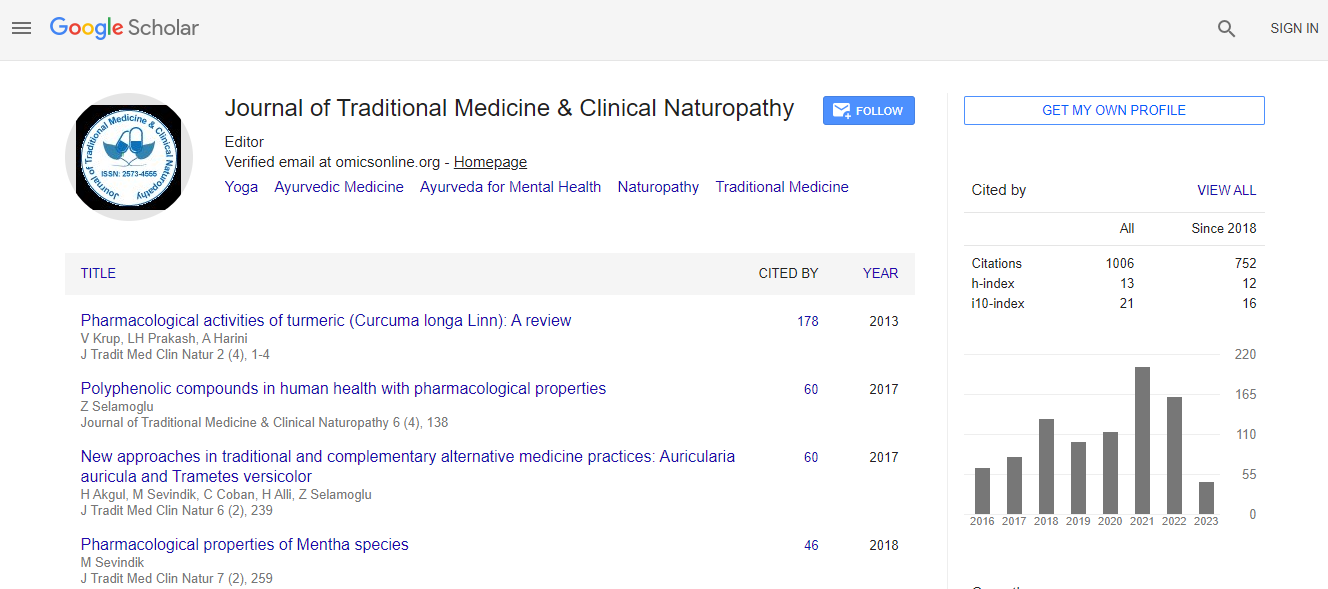Research Article
Prevalence on the Use of Traditional Medicine in Brunei Darussalam
| Nurolaini K1*, Wint Z1, Jaini NH2, Jaludin NH2, Hamid MA2 and Linda YYL2 | |
| 1Pengiran Anak Puteri Rashidah Sa'adatul Bolkiah Institute of Health Sciences, Universiti Brunei Darussalam, Brunei Darussalam | |
| 2Department of Pharmaceutical Services, Raja Isteri Pengiran Anak Saleha Hospital, Ministry of Health, Brunei Darussalam | |
| Corresponding Author : | Nurolaini K Deputy Dean (Academic, Research & Internationalisation) & Senior Lecturer Pengiran Anak Puteri Rashidah Sa'adatul Bolkiah Institute of Health Sciences Universiti Brunei Darussalam, Jalan Tungku Link Gadong, BE1410, Brunei Darussalam Tel: 2463001-2210 Fax: 6732461-081 E-mail: Nurolaini.kifli@ubd.edu.bn |
| Received March 17, 2014; Accepted May 14, 2014; Published May 18, 2014 | |
| Citation: Nurolaini K, Wint Z, Jaini NH, Jaludin NH, Hamid MA, Linda YYL (2014) Prevalence on the Use of Traditional Medicine in Brunei Darussalam. J Homeop Ayurv Med 3:155. doi: 10.4172/2167-1206.1000155 | |
| Copyright: © 2014 Nurolaini K, et al. This is an open-access article distributed under the terms of the Creative Commons Attribution License, which permits unrestricted use, distribution, and reproduction in any medium, provided the original author and source are credited. | |
Abstract
The use of traditional medicines (TM) and Complementary Alternative Medicines (CAM) are common in Western Pacific countries including Brunei and Singapore. Our cross-sectional study assessed the prevalence of TM use amongst Brunei population. The objectives are to compare the practices on the use of TM with conventional medicines and to address the safety and cost implication. This study was conducted for a period of 12 months from October 2007. It was a cross-sectional study using a structured self-administered questionnaire which was pretested from the pilot study. Questionnaires were randomly administered to all patients attending the tertiary hospitals and health centres in Brunei. The questionnaires are bilingual and consists of 27-item questions. Both sexes were included in the study, and participants had to be mentally competent and of age between 16 years and 85 years. Data entry and analysis were done using SPSS version 16.0. Information leaflets were given to participants, and their written-informed consent was obtained. There were 2,400 respondent for this study of which 32% (n=777) were male and 68% (n=1,623) were female, 85 % were Malays, and 55% were in employment status. The proportion of Bruneians who have used some form of TM during their lifetime was 59%, (n=1,396). Use of TM is equal in proportion among Chinese (62%) and Malay ethnicities (59%). Use of TM was highest in the 56 years and above age group (71%), p<0.01. It was higher amongst female respondents compared to males p<0.001. 64% respondents indicated that TM was safe. 76% (n= 1,804) of respondents answered that TM are easily available. Majority of TM users (91%) used local herbs and 63% used TM for general health and vitality. 43% of users of prescribed medicines (common cold remedies, antipyretics and antibiotics) reported using TM as well. 73% of respondents did not report their use of TM to their doctors. 94% (n=1,284) of the respondents claimed that there were no adverse effects accompanying use of TM. 62% perceived TM is safe due to the traditional practices and natural sources. 82% of TM users spend less than BND $50 on TM every month. We concluded from this study that there is a high prevalence of TM use in Brunei despite the free health care services provided in the country. Doctors need to understand TM better and communicate more with their patients regarding TM use. This can be due to their use as maintenance of health rather than for treatment of illness. TM is also easily available and perceived to be safe because it had been used for generations and of natural sources despite their limited scientific evidence. The lack of regulation and perceptions of TM being safe needs extra cautions to avoid any potential serious adverse herb-drug interactions. Therefore, medical and health care workers should not ignore this perceptions and patients’ education is utmost important.

 Spanish
Spanish  Chinese
Chinese  Russian
Russian  German
German  French
French  Japanese
Japanese  Portuguese
Portuguese  Hindi
Hindi 
